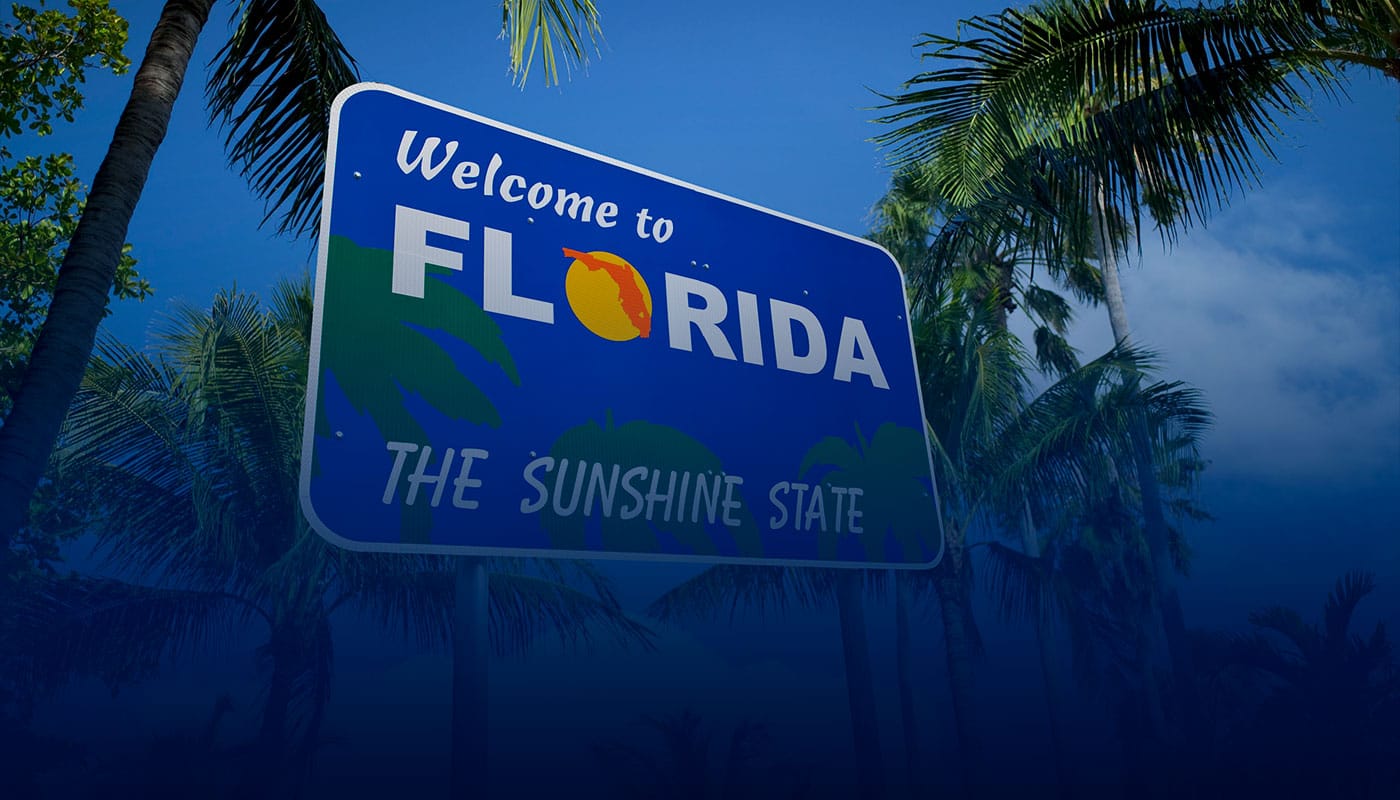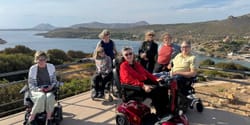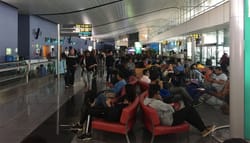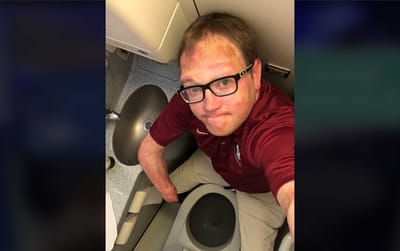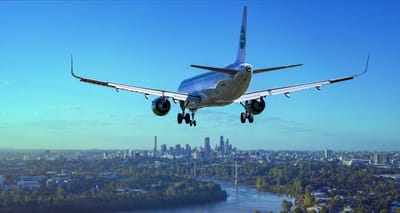The State of Florida is a great place to live, work, play and visit – that is, unless you are a wheelchair user. Don’t get me wrong – the sunshine, sandy beaches, theme parks and natural springs are all very attractive. But the state’s poor infrastructure and the failure of local governments to prioritize accessibility has created an environment that can be extremely unfriendly to wheelchair users. Tourism in the Sunshine State is growing, but there are a few things you should consider before planning a wheelchair accessible Florida vacation.
Public transportation is limited, infrequent.
Many of Florida’s largest cities have public transportation services, but they run on infrequent and limited schedules. In the City of Orlando, which I believe has the state’s best public transport system, many bus routes in densely populated areas run only once per hour. Weekend schedules are limited with an early end to service, restricting mobility for thousands of residents and tourists. The small number of express routes means that trips across town can take multiple hours. And, if you miss one of the many tight connections, expect to add an hour to your journey.
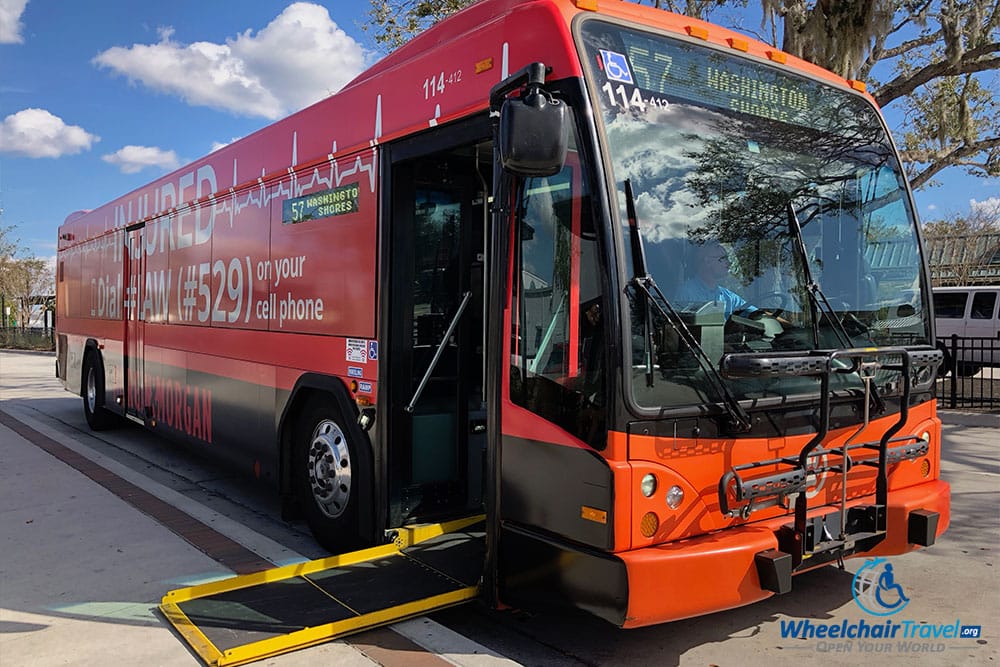
In nearly every Florida city, public transportation stops running hours before the last flights arrive at the airport. This is especially troubling for wheelchair travelers, as a late arrival or delayed flight can leave you stuck at the airport overnight. It has happened to me on more than a few occasions.
Need a wheelchair taxi? Good luck.
Many businesses fail to meet their obligations under the Americans with Disabilities Act, but none more so than taxi cab companies. Not every Florida city has wheelchair taxis, including the capital of Tallahassee and the major college town of Gainesville. Where wheelchair taxis do exist, they are few and far between, and often are not available on demand, late at night or on the weekends.
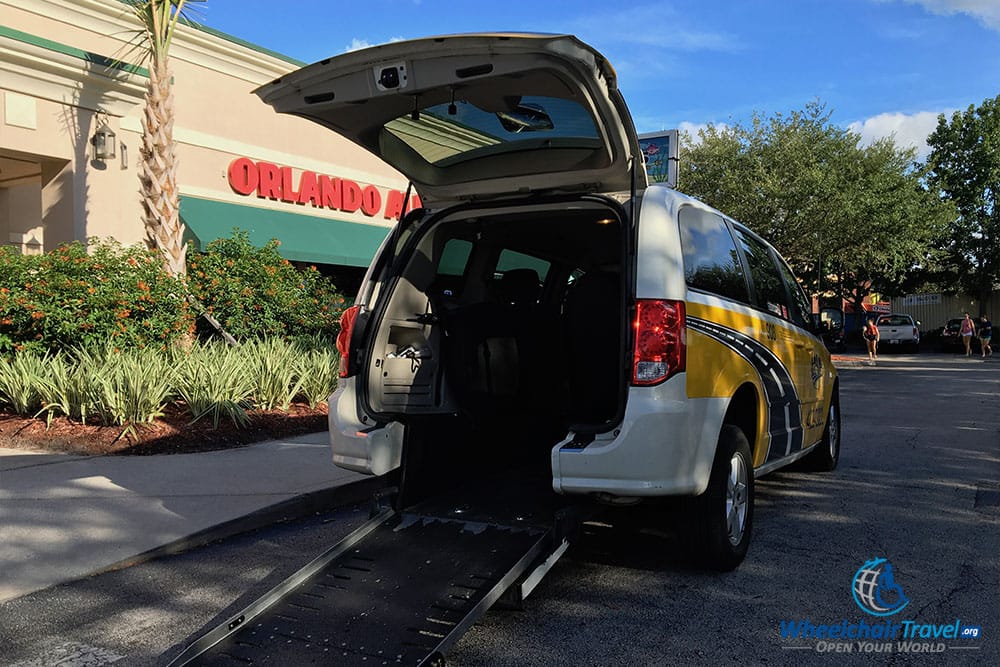
I’ve waited upwards of 4 hours for taxis in Ft. Lauderdale, Jacksonville, Miami, Orlando and Tampa, and in many cases have been forced to roll my wheelchair distances of up to 10 miles when a taxi I ordered never came. Add Florida’s frequent thunderstorms to the equation and you’re in for a potentially miserable roll.
What about rideshare apps? Although Uber and Lyft have begun offering rides for wheelchair users in cities like Washington, D.C. and Philadelphia, there is no such offering in Florida. In 2017 and with overwhelming bipartisan support, the state legislature passed a law that gave rideshare companies unfettered access to markets throughout the state. The law, F.S. 627.748, prohibits city and county governments from placing additional restrictions on Uber and Lyft, including vehicle accessibility requirements. Without legislative action, there is no hope of wheelchair accessible Uber or Lyft services in Florida, and the standard taxi companies continue to buckle under unfair competitive pressure.
Florida is more dangerous to pedestrians than any other state.
In its 2016 report Dangerous by Design, the National Complete Streets Coalition studied 10 years of data on pedestrian deaths, from 2005 to 2014. The data was used to populate the Pedestrian Danger Index, or PDI, which calculates “the share of local commuters who walk to work—the best available measure of how many people are likely to be out walking each day—and the most recent data on pedestrian deaths.” The PDI was used to determine the likelihood (aka danger) of dying while walking in each of the 50 states and in the country’s 104 largest metropolitan statistical areas.
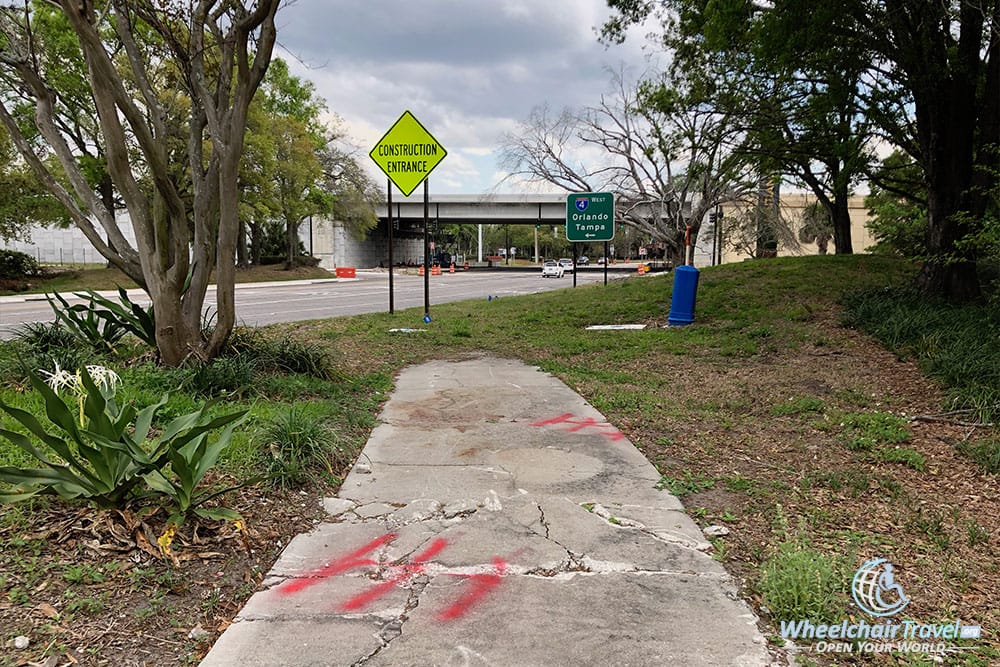
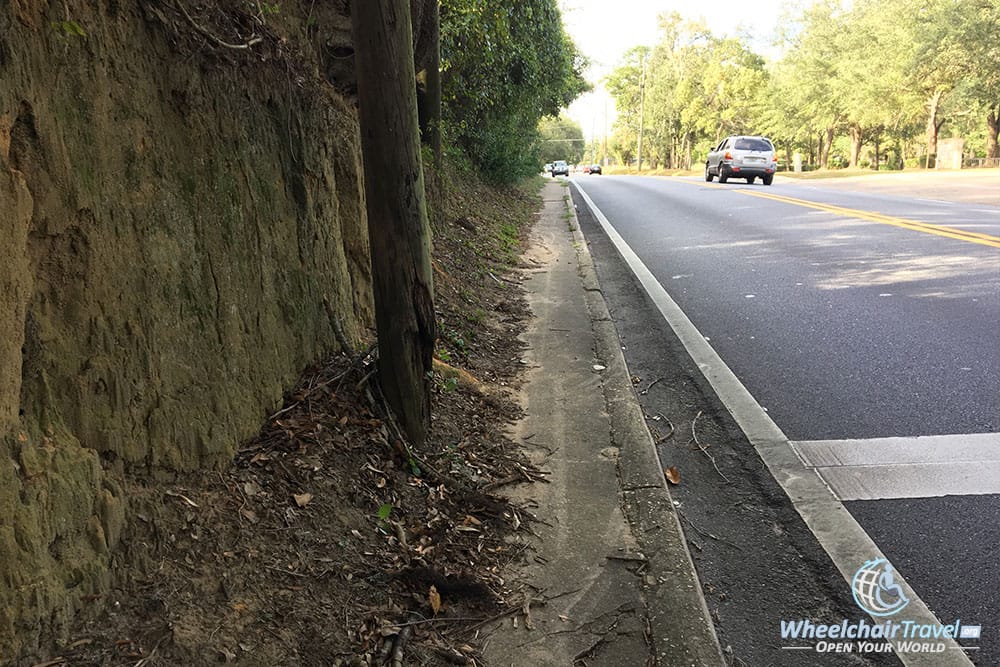
Florida communities received 7 of the 10 highest PDIs, which indicates a significant risk to pedestrian safety. As a whole, Florida had the worst score among the 50 states, with a PDI of 177.0, more than three times higher than the national average of 52.5. The top 10 most dangerous metro areas for pedestrians are:
- Cape Coral-Fort Myers, FL — 283.1 PDI
- Palm Bay-Melbourne-Titusville, FL — 235.2 PDI
- Orlando-Kissimmee-Sanford, FL — 234.7 PDI
- Jacksonville, FL — 228.7 PDI
- Deltona-Daytona Beach-Ormond Beach, FL — 228.2 PDI
- Lakeland-Winter Haven, FL — 200.6 PDI
- Tampa-St. Petersburg-Clearwater, FL — 192.0 PDI
- Jackson, MS — 189.6 PDI
- Memphis, TN — 153.3 PDI
- North Port-Sarasota-Bradenton, FL — 148.2 PDI
The only major metropolitan area in Florida not represented in the top 10 was the Miami, Fort Lauderdale and West Palm Beach area, but it took the 11th spot, with a PDI of 145.1.
NCSC blames the high rate of pedestrian deaths in Florida on streets without sidewalks (where people are forced into active roadways), streets with wide or multiple lanes that encourage high vehicle speeds, and streets without well-marked pedestrian crossings at regular intervals. The lack of curb ramps also forces wheelchair users into the road.
Do wheelchair users really get hit by cars? Yes, they do, and quite frequently. In just the first two weeks of this month, wheelchair users were struck by cars in Arkansas, California and Florida. There were also accidents in Australia and the United Kingdom. And that’s just the first page of the Google results.
The majority of hotels in Florida are not ADA compliant.
That headline is wrong. It should read, the overwhelming majority of hotels in Florida are not ADA compliant. And this is true across the spectrum—at budget, mid-range and luxury hotels.
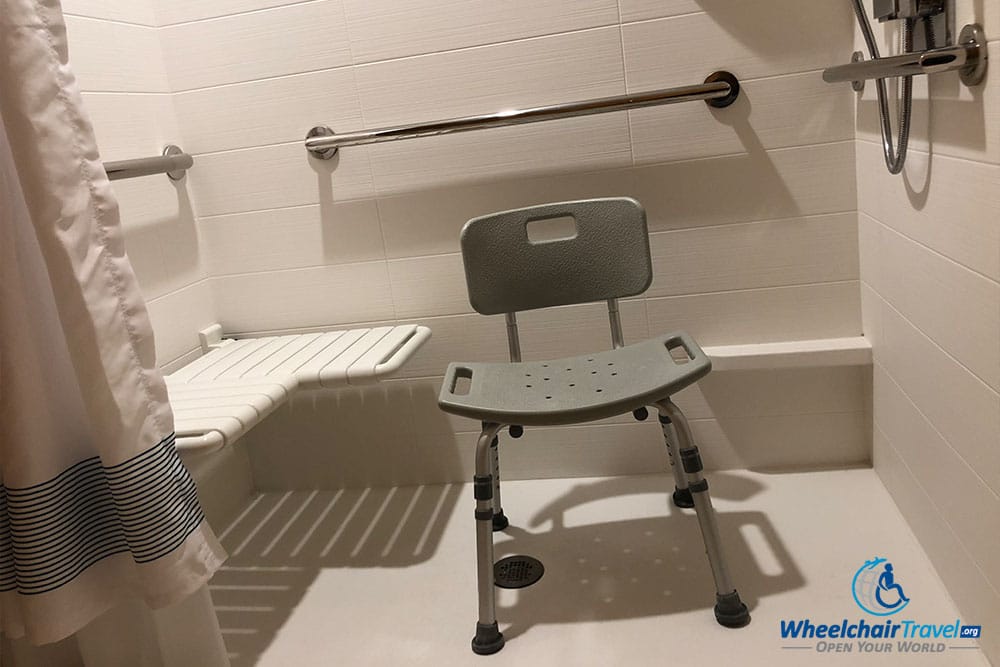
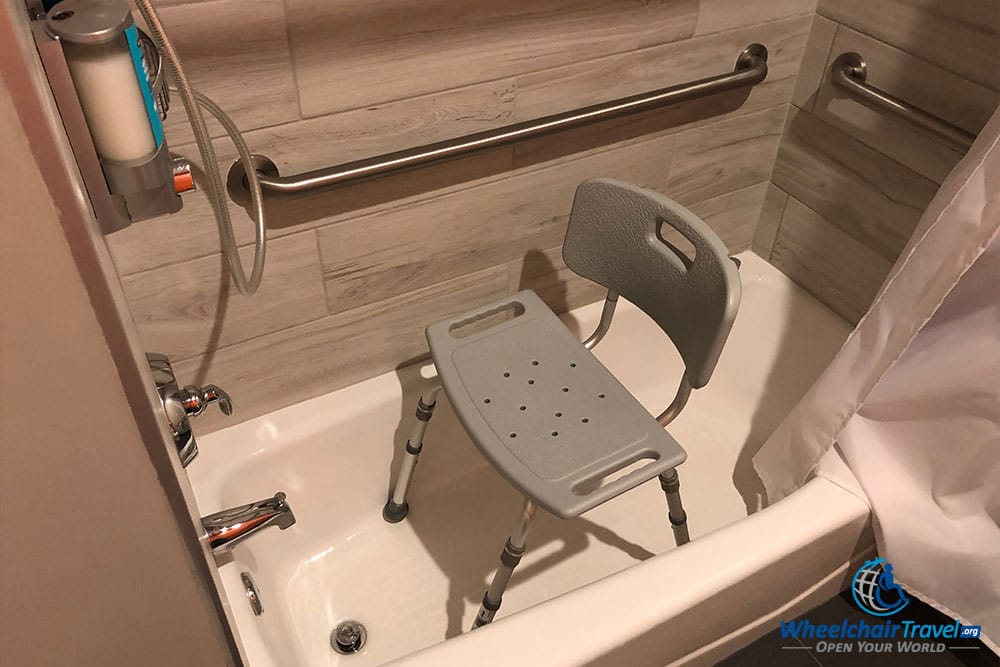
The photos above were taken at brand-new hotels that have opened within the last year. If you can’t spot the ADA compliance issues, check out my guide to ADA accessible hotel rooms. There are 4 significant accessible design violations visible in both the roll-in shower and bathtub.
Earlier this year, I released a study on the accessibility of budget hotels in Florida. Through that study, I found that 87.5% of the low-cost hotels I stayed in had one or more ADA violations that would significantly impact the ability of disabled people to use the toilet, bathtub or shower. Amazingly, having stayed at more than 65 hotels in the State of Florida alone, I have not found more expensive hotels to be any better.
In addition to non-compliant bathrooms, I have faced many of the following ADA violations at Florida hotels:
- Hotel shuttles are not wheelchair accessible and no equivalent service was available.
- Swimming pool lifts not provided or non-functioning.
- Doors inside accessible guest rooms are narrower than 32 inches.
- No lowered peephole in ADA hotel room doors.
- ADA room reservations not held/honored (i.e. given bathtub instead of roll-in shower).
While not all hotels have these accessibility issues, finding an ADA compliant hotel in Florida is like searching for a needle in a haystack.
State government has made ADA enforcement more difficult.
A 2017 law, passed with unanimous support in both the Florida House and Senate, has essentially given Florida businesses immunity from many ADA lawsuits. The law allows businesses to file a remediation plan with the state, which empowers them to delay compliance with the ADA’s equal access provisions for up to 10 years.
It’s a ridiculous law that will deter many worthy ADA complaints, and it violates the spirit of inclusion that the ADA sought to develop. In its push to create a welcoming environment for businesses, the Florida government has pushed people with disabilities into the shadows. A decade is a long time to comply with a law that is nearly 30 years old.
There are hurricanes. And no plan for evacuating disabled tourists.
I wrote an article for Inside Disability about my experience in Miami while Hurricane Matthew was approaching the Florida coast. In short, public transportation had been suspended early (and without notice), leaving me stuck at a train station miles from my hotel. No wheelchair taxis were available, of course, so I called the police and asked for help. They could do nothing for me, and suggested I call an ambulance and leave my power wheelchair behind.
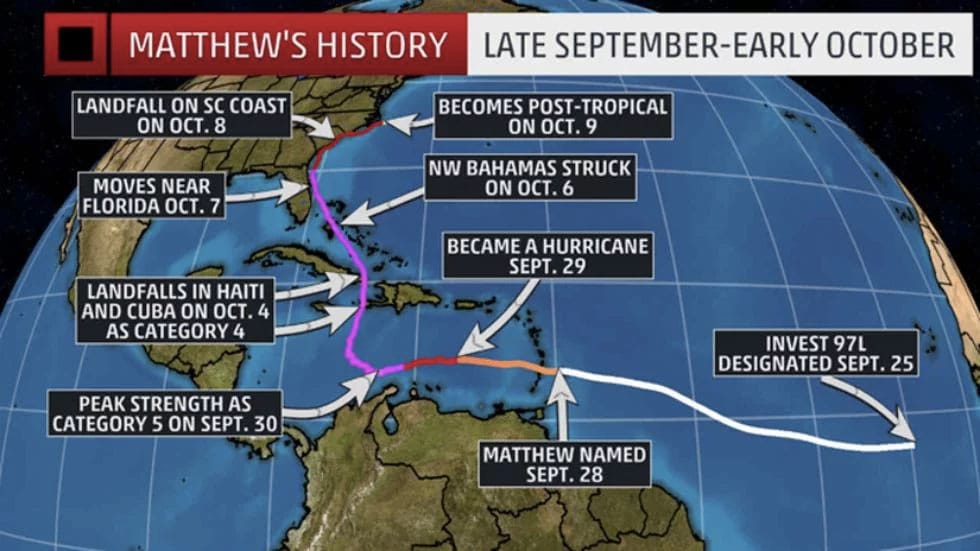
That story ended well, by a stroke of luck, but it made me realize that there are no plans to help tourists with disabilities during extreme weather events in Florida. You’d better have a car of your own, which is something the vast majority of power wheelchair users do not have while on vacation.
…but there is good news!
Yes, there are major accessibility challenges in Florida. And I have been tough on the Sunshine State in this article. But it’s not all bad news. There are many reasons why people flock to Florida every month of the year. In a few weeks, I’ll write a follow-up to this article, filled with all of the best reasons to visit Florida as a wheelchair user. If Disney World and Cinderella’s Castle isn’t enough to convince you, there are accessible beaches, boat rides, resorts, state/national parks and more that I can’t wait to share.
Remember, with proper planning, accessibility barriers can be overcome. Florida is no exception!

